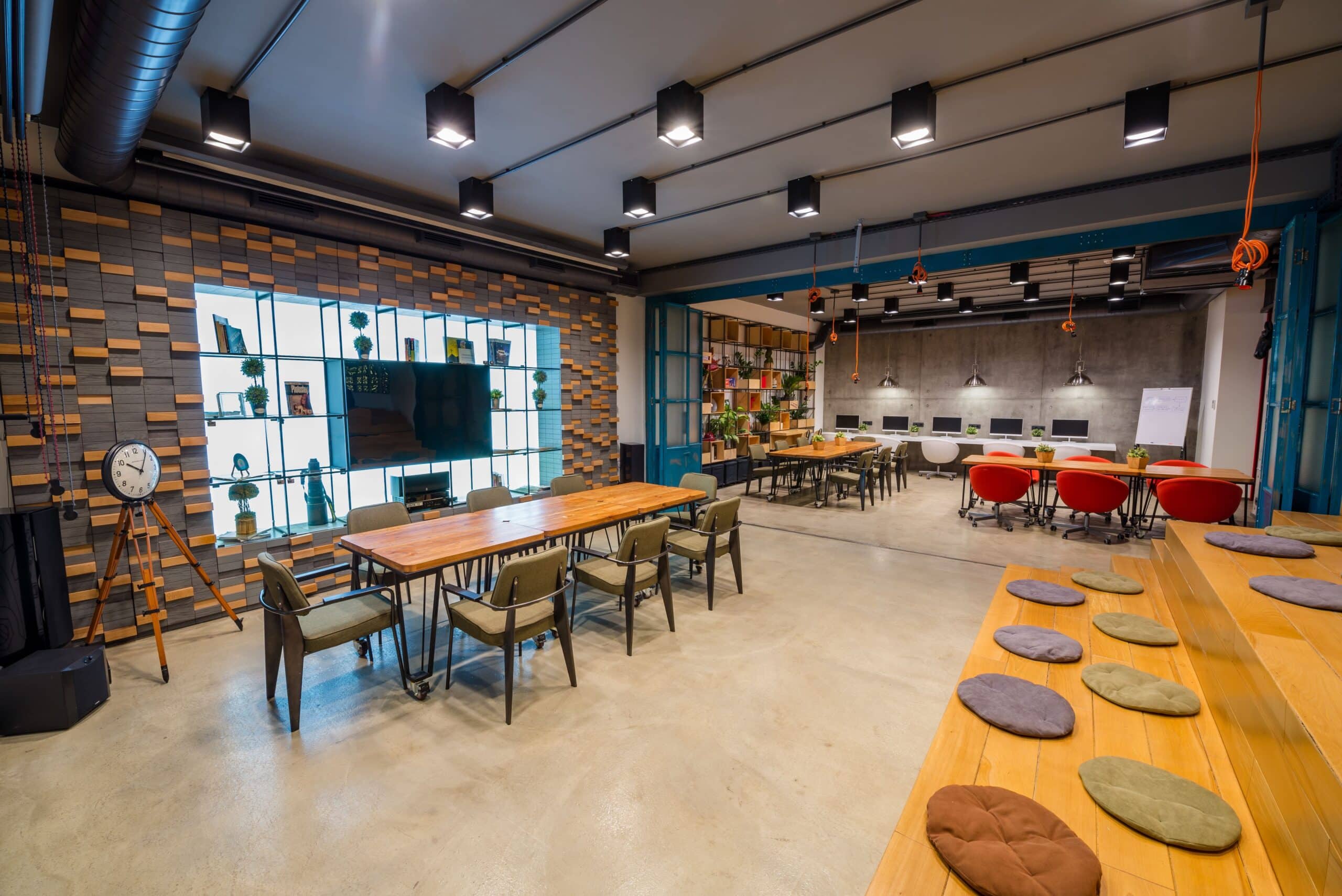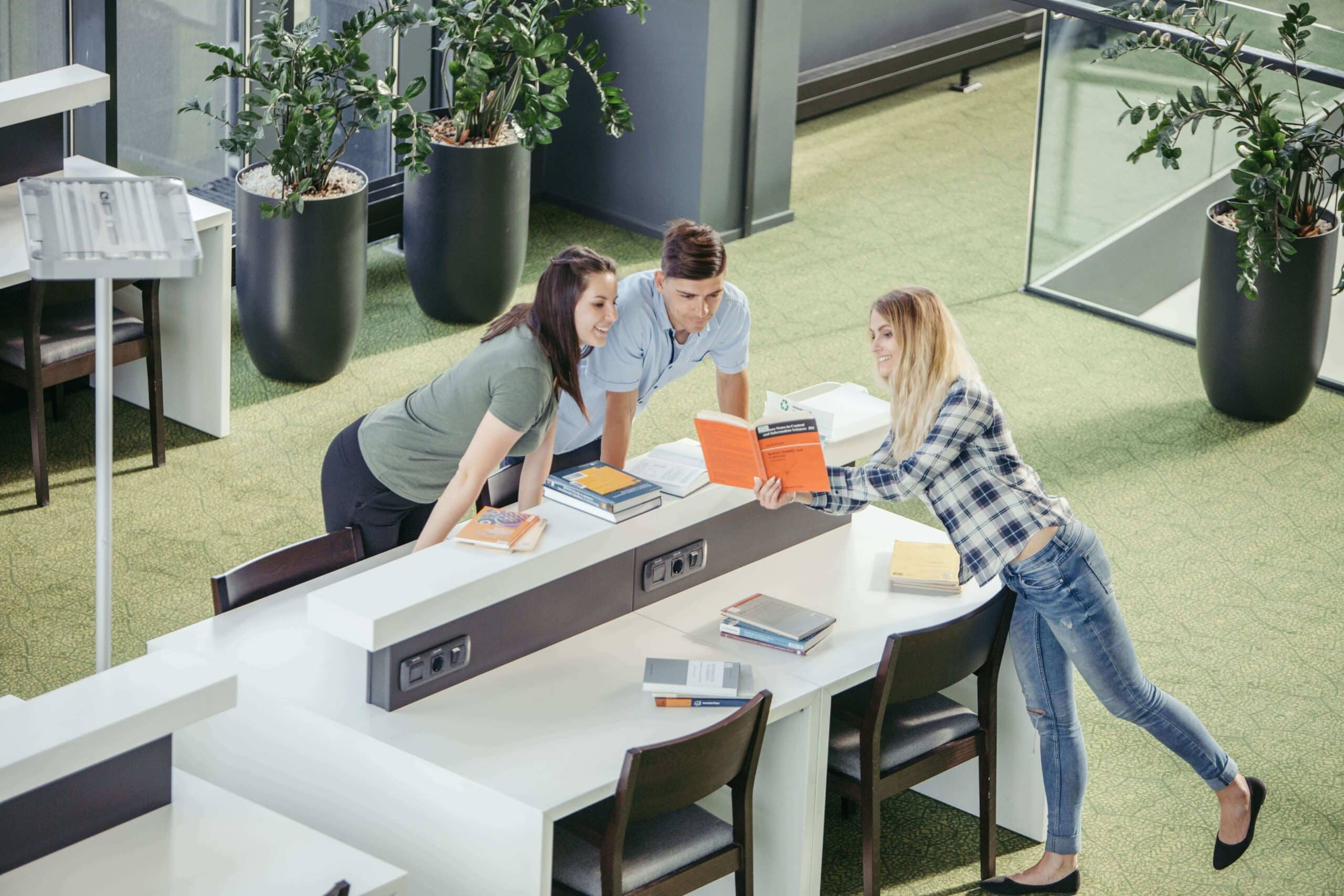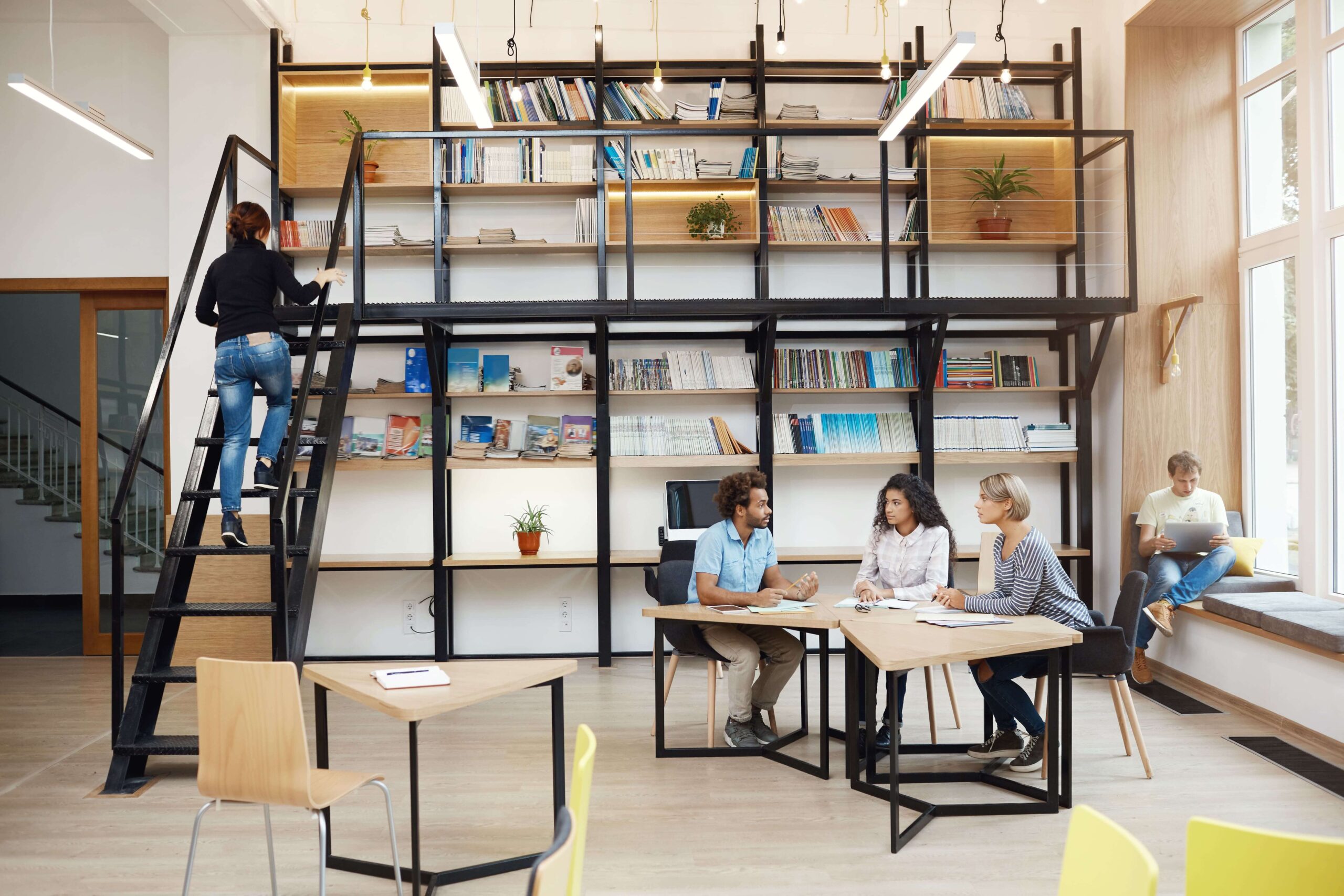
Creative Interior Design Ideas for Modern Offices
The era of eggshell-colored walls and monotonous cubicles under flickering fluorescent lights is long gone. Today, modern offices are very uniquely decorated, as dynamic reflections of a company’s brand and values, evolving beyond just places of business. These contemporary spaces aim to foster creativity and boost morale.
Curious about the advantages of a modern office design or looking to rejuvenate your current workspace? You’re in the right place. This article explores the elements of modern office design and highlights the latest trends to inspire your next interior upgrade. Whether you’re working with a spacious floor plan or a compact office, the right design ideas can transform your space into a stylish and productive environment. We’ve compiled efficient and innovative ideas to get you started on your office transformation journey.
Incorporate Greenary in Your Office
Introducing greenery into an office design offers an incredible number of benefits for employees, clients, and the overall office environment. Plants are not just aesthetically pleasing; they play a significant role in enhancing air quality by removing toxins and creating a healthier space. Moreover, they have a profound impact on employee well-being, boosting moods and creativity.
Whether it’s through a living wall installation, the incorporation of desk plants, or a variety of plants in a unique configuration in common areas, including greenery creates an attractive and appealing space. The visual appeal of plants can make the office environment more inviting, reducing stress levels and fostering a sense of calm and relaxation.
Incorporating plants is also a natural way to maintain pristine air quality. Plants act as natural disinfectants, giving a refreshing feeling to the people inside. This improved air quality can lead to better health and increased productivity among employees.

Top Plants to Consider for Your Office
- Golden Pothos: The golden pothos is a fast-growing plant that is easy to care for and can thrive in low-light conditions. It is renowned for its air-purifying capabilities, removing toxins such as formaldehyde, benzene, and carbon monoxide from the air. Its trailing vines can be a beautiful addition to shelves or hanging planters, adding a touch of nature to your office decor.
- Spider Plant: The spider plant is a low-maintenance option that thrives in indirect sunlight, making it perfect for small offices with limited natural light. Known for its air-purifying properties, it effectively removes toxins such as formaldehyde and benzene from the air, contributing to a cleaner and healthier office environment.
- Peace Lily: The peace lily is a popular indoor plant that requires minimal care and adds a touch of elegance to any office space. Its ability to remove toxins from the air and improve air quality makes it an ideal choice for small offices. Additionally, its beautiful white flowers can enhance the aesthetic appeal of your workspace.
Incorporating greenery into your office design is more than just a trend; it’s a strategic move toward creating a healthier, more productive, and visually pleasing workspace. By selecting the right plants and thoughtfully placing them around the office, you can transform your environment into one that supports both the physical and mental well-being of everyone who steps inside.
Utilizing Vertical Space in Modern Office Design
Maximizing vertical space in your office is an excellent strategy for creating a more functional and spacious environment, especially in small offices where floor space is at a premium. By installing shelves, cabinets, or bookcases that extend from floor to ceiling, you can significantly increase your storage capacity while keeping the office organized and clutter-free.
To make the most of vertical space, consider these practical solutions:
- Shelving Units and Bookcases: Installing tall shelving units or bookcases provides ample storage for office supplies, documents, and equipment. This not only keeps items organized but also makes them easily accessible, reducing the time spent searching for necessities.
- Cabinets: Floor-to-ceiling cabinets can offer extensive storage while maintaining a sleek and tidy appearance. These can be particularly useful for storing bulkier items or important files that need to be kept secure.
Additionally, using vertical space for decorative purposes can enhance the overall aesthetic of your office. Hanging artwork or decorative elements higher up on the walls draws the eye upward, creating the illusion of higher ceilings and making the space feel more open and airy. This design technique can significantly improve the ambiance of small offices, making them feel more spacious and inviting.
Incorporating vertical space effectively not only enhances storage and organization but also contributes to a more appealing and functional office environment. By thoughtfully utilizing every inch of your office, you can create a workspace that is both efficient and enjoyable, supporting the well-being and productivity of everyone who uses it.

Enhancing Office Spaces with Mirrors
Mirrors can be a powerful tool especially in small office interior design, offering both functional and aesthetic benefits. By strategically placing mirrors throughout the office, you can create the illusion of more space and light, making the workspace feel larger and more welcoming. Here are some tips for effectively using mirrors in small office interior design:
Strategic Placement
- Near Elevators and Lounges: Fixing a mirror near elevators, lounges, or between two departments can naturally make people stop for a bit and take a look at themselves. This brief pause can be refreshing, especially when stressed or working hard, and can provide a quick boost of energy.
- Reflecting Light: Mirrors should be placed in areas that reflect natural light or light fixtures. By doing so, you can create a brighter and more open space. For example, positioning mirrors opposite windows or doors can help bounce natural light into areas that might not receive as much, enhancing the overall brightness of the office.
- Common Areas: Placing mirrors in common areas like break rooms or meeting spaces can make these areas feel more spacious and inviting. This not only improves the aesthetic appeal but also contributes to a more pleasant environment for collaboration and relaxation.
Choosing the Right Mirrors
- Size and Shape: The size and shape of mirrors can significantly impact the design aesthetic of your office. Large mirrors can create the illusion of more space, making small offices feel bigger and more open. Smaller mirrors can be grouped together to create a unique and eye-catching design. The shape of the mirror also plays a role: round or oval mirrors provide a softer and more organic look, while rectangular or square mirrors offer a more modern and streamlined appearance.
- Decorative Elements: Using mirrors as decorative elements can add to the office’s overall design. For instance, mirrored wall art or creatively framed mirrors can serve as focal points in a room, enhancing the visual interest and making the space feel more dynamic.
Additional Benefits
- Stress Relief and Energy Boost: Viewing oneself in a mirror can be a brief yet effective way to relieve stress and boost energy. When employees see their reflection, it can prompt a moment of self-awareness and a quick mental reset, helping them feel more refreshed and ready to tackle their tasks.
- Creating Illusions: Mirrors can be used to create visual illusions that make the office feel more expansive. For example, placing a mirror at the end of a hallway can make the hallway appear longer, adding depth to the space.
Incorporating mirrors into your office design is a simple yet effective way to enhance both functionality and aesthetics. By thoughtfully placing mirrors and selecting the right sizes and shapes, you can create a workspace that feels larger, brighter, and more welcoming. This not only improves the physical environment but also contributes to the overall well-being and productivity of employees.
Harnessing Natural Light with Glass Partitions and Windows

Utilizing glass partitions in an office design is a strategic way to invite natural light into the interior, offering numerous benefits such as higher levels of vitamin D, increased productivity, and enhanced morale among employees. Integrating glass wall partitions into traditional walls not only provides privacy but also ensures that the light from exterior windows reaches the interior of the office, creating a bright and welcoming atmosphere.
One of the most effective methods to introduce natural light into a small office is through the installation of large windows or skylights. By allowing natural light to flood the space, the room appears brighter, more spacious, and inviting.
Tip: Positioning workstations near windows allows employees to enjoy the benefits of natural light while working. This setup not only enhances productivity but also contributes to the overall well-being of employees, creating a more positive and comfortable work environment.
- This, in turn, can increase productivity and create a more positive atmosphere for employees.
- Sheer window treatments are an excellent choice for small offices as they allow natural light to filter through while providing privacy. Moreover, using reflective surfaces such as glass tables or polished metal accents can further enhance daylighting by bouncing light throughout the space, making it feel even brighter and more open.
- When designing an office of a smaller size, it is essential to consider the placement and size of windows carefully.
- Windows that are too small may not provide enough natural light, while those that are too large can create issues with glare and heat. Additionally, the orientation of the building and the position of the windows can impact the amount of natural light that enters the space.
- In addition to its aesthetic benefits, natural light can also help reduce energy consumption by decreasing the need for artificial lighting. This can lead to a reduction in energy costs and a more sustainable workplace.
Overall, incorporating natural light in small office interior design can have numerous benefits. From improving employee well-being to reducing energy consumption, it is an element that should not be overlooked when designing a workspace.
To discover how innovative design solutions can transform your workspace and for more office design inspiration, reach out to Czar Interiors, and take the first step toward designing your dream office.